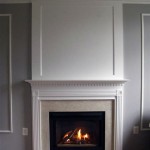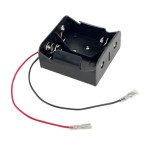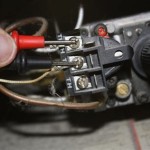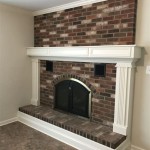Replacing a Marble Fireplace Surround: A Detailed Guide
A fireplace often serves as a focal point within a living space, and the surround plays a significant role in its aesthetic appeal. Marble, a classic and luxurious material, is frequently used for fireplace surrounds. However, due to damage, changes in decor preferences, or the desire for an updated look, homeowners may consider replacing their existing marble fireplace surround. This article provides a comprehensive guide to the process, outlining key considerations and steps involved in replacing a marble fireplace surround.
Before embarking on the replacement project, careful planning and assessment are crucial. This includes evaluating the existing fireplace structure, selecting a suitable replacement surround, and preparing the workspace. Improper planning can lead to complications and unexpected costs, so thorough preparation is paramount.
Assessing the Existing Fireplace Structure
The first step is to thoroughly inspect the existing fireplace and its surrounding structure. This involves identifying the type of fireplace (e.g., gas, wood-burning, electric), its dimensions, and the condition of the underlying brick or framing. Determining the structural integrity is crucial to ensure that the replacement surround can be safely and securely installed. Look for signs of damage such as cracks, crumbling mortar, or water damage. These issues should be addressed before proceeding with the replacement, as they could compromise the stability of the new surround.
Carefully measure the dimensions of the existing marble surround, including its height, width, and depth. Note the size of the firebox opening and the dimensions of any hearth extensions. These measurements will be essential when selecting a new marble surround that fits properly and complements the existing fireplace.
Photographs of the existing fireplace from various angles will also be helpful, especially when discussing the project with contractors or suppliers. These visual records can provide a clearer understanding of the fireplace's current state and facilitate accurate estimations for the replacement work.
Selecting a Replacement Marble Surround
Choosing a replacement marble surround involves considering various factors, including the type of marble, the design style, and the overall dimensions. Marble comes in a wide variety of colors, veining patterns, and finishes, each offering a unique aesthetic. Common types include Carrara, Calacatta, and Nero Marquina, each with distinct characteristics and price points. Selecting a marble type that complements the existing decor and personal preferences is essential.
The design style of the surround should also align with the overall architectural style of the room. Options range from traditional and ornate designs to contemporary and minimalist styles. Consider the shape of the surround, the presence of decorative elements such as corbels or moldings, and the overall proportion in relation to the fireplace and the room.
Ensure that the dimensions of the replacement surround are compatible with the existing fireplace opening and hearth. A surround that is too large or too small will not only look aesthetically unappealing but may also pose structural or safety concerns. It's often recommended to consult with a professional installer to confirm the compatibility of the selected surround with the existing fireplace. Some suppliers offer custom marble surrounds, allowing for precise fit and design customization.
Before making a final decision, obtain samples of the marble being considered. This allows for a physical comparison against the existing fireplace and surrounding decor, ensuring that the color, veining, and finish meet expectations. Lighting conditions can significantly affect the appearance of marble, so view the samples in the same lighting environment as the fireplace.
Preparing the Workspace and Gathering Materials
Proper preparation of the workspace is essential to ensure a smooth and efficient removal and installation process. This involves protecting the surrounding area from dust and debris and gathering the necessary tools and materials. Start by covering the floor and nearby furniture with drop cloths or plastic sheeting. This will prevent damage from falling debris and simplify cleanup.
Tools needed for the project typically include: safety glasses, gloves, a dust mask, a hammer, a chisel, a pry bar, a level, a measuring tape, a pencil, a drill with appropriate drill bits, a mortar mixing tub, a margin trowel, a pointing trowel, and a sponge. Depending on the installation method, additional tools such as a wet saw for cutting marble may be required. A shop vacuum will also be useful for cleaning up dust and debris.
Materials will include: mortar or adhesive specifically designed for marble, shims for leveling, grout (if needed), and sealant. Choose a high-quality mortar or adhesive that is compatible with both the marble surround and the underlying substrate. Ensure that the grout color complements the marble and that the sealant is appropriate for the fireplace environment. It is recommended to purchase slightly more material than estimated to account for any waste or errors during the installation process.
Safety is paramount. Wear safety glasses, gloves, and a dust mask throughout the removal and installation process. Marble dust can be harmful if inhaled, so proper respiratory protection is essential. If using power tools, follow the manufacturer's instructions carefully and wear appropriate hearing protection.
Removing the Existing Marble Surround
The removal process should be approached with caution to avoid damaging the surrounding structure. Carefully begin by inspecting the existing surround to determine how it is attached. Common methods include mortar, adhesive, or mechanical fasteners such as screws or brackets.
If the surround is held in place with mortar, use a hammer and chisel to gently break the mortar joints. Start at the top and work downwards, carefully prying the marble pieces away from the wall. Avoid applying excessive force, as this could damage the marble or the underlying brick. If adhesive is used, a heat gun or solvent may be necessary to soften the adhesive before attempting to remove the surround. Test the heat gun or solvent in an inconspicuous area first to ensure that it does not damage the surrounding surfaces.
If mechanical fasteners are visible, remove them using a screwdriver or drill. Once all fasteners are removed, gently pry the surround away from the wall. If the surround is particularly heavy, enlist the help of another person to prevent it from falling and causing damage or injury.
After removing the marble surround, thoroughly clean the underlying surface. Remove any residual mortar, adhesive, or debris using a scraper or wire brush. Ensure that the surface is clean, dry, and free of any loose particles. This will provide a solid and even surface for the new surround to adhere to.
Installing the New Marble Surround
With the old surround removed and the surface prepared, begin installing the new marble surround. Start by dry-fitting the surround to ensure a proper fit. This involves placing the marble pieces in their intended positions without applying any mortar or adhesive. Use shims to level the surround and ensure that it is plumb and square.
Once satisfied with the fit, mix the mortar or adhesive according to the manufacturer's instructions. Apply a thick, even layer of mortar to the back of each marble piece using a margin trowel. Carefully position the marble piece against the wall, pressing it firmly into place. Use shims to maintain the proper spacing and alignment. Wipe away any excess mortar with a damp sponge.
Continue installing the remaining marble pieces, working from the bottom upwards. Periodically check the level and alignment of the surround using a level. Allow the mortar or adhesive to cure completely according to the manufacturer's instructions. This may take several hours or even overnight. Avoid disturbing the surround during the curing process.
After the mortar or adhesive has cured, remove the shims and fill any gaps between the marble pieces with grout. Choose a grout color that complements the marble. Apply the grout using a pointing trowel, pressing it firmly into the joints. Wipe away any excess grout with a damp sponge. Allow the grout to dry completely according to the manufacturer's instructions.
Finishing Touches and Maintenance
Once the grout is dry, apply a sealant to protect the marble from stains and water damage. Choose a sealant that is specifically designed for marble. Apply the sealant according to the manufacturer's instructions. Regular cleaning and maintenance will help to keep the marble surround looking its best for years to come. Wipe the surround with a damp cloth regularly to remove dust and dirt. Avoid using harsh chemicals or abrasive cleaners, as these can damage the marble.
Inspect the surround periodically for any signs of damage, such as cracks or chips. Repair any damage promptly to prevent it from worsening. Consider applying a marble polish occasionally to enhance the shine and luster of the marble.
If the fireplace is a wood-burning fireplace, exercise caution when using it. Avoid overloading the firebox or allowing the fire to burn too hot, as this can damage the marble surround. Clean the fireplace regularly to remove soot and ash. By following these maintenance tips, the marble fireplace surround will provide years of beauty and enjoyment.

How To Tile Over A Marble Fireplace Surround Porch Daydreamer

Diy Marble Fireplace And Mantel Makeover Top Shelf

How To Tile Over A Marble Fireplace Surround Porch Daydreamer

Painted Marble Fireplace Surround Two Years Later Simply2moms

How To Tile Over A Marble Fireplace Surround Porch Daydreamer

How To Update An Outdated Marble Fireplace Fireplaces Surround Corner Makeover

How Can I Replace Marble With Subway Tile On A Fireplace Surround Hometalk

Replacing Marble Hearth And Surround On Fireplace

Painted Marble Fireplace Surround Two Years Later Simply2moms

How To Tile Over A Marble Fireplace Surround Porch Daydreamer
Related Posts








